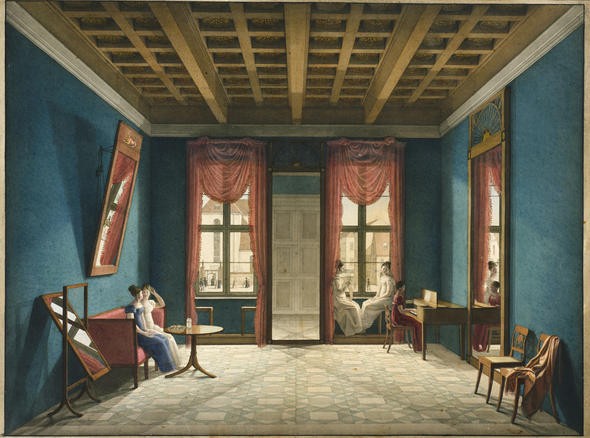Windows and Screens
 Wie van de Archipel protagonisten kon vermoeden dat het thema van de eerste Archipel lezing na zoveel jaren zou terugkomen. Als we het archief erop nalezen zien we dat Marc Dubois, Walter Barthier en Dirk Delaere op 18 maart 1980 de sprekers waren van een themavergadering met als titel ‘Het venster’. Met enige fierheid stellen we vast dat na zoveel jaren het onderwerp, weliswaar vanuit een ander invalshoek, zijn actualiteitswaarde heeft behouden.
Wie van de Archipel protagonisten kon vermoeden dat het thema van de eerste Archipel lezing na zoveel jaren zou terugkomen. Als we het archief erop nalezen zien we dat Marc Dubois, Walter Barthier en Dirk Delaere op 18 maart 1980 de sprekers waren van een themavergadering met als titel ‘Het venster’. Met enige fierheid stellen we vast dat na zoveel jaren het onderwerp, weliswaar vanuit een ander invalshoek, zijn actualiteitswaarde heeft behouden.

Professor Teyssot geeft de lezing in het kader van ‘The Doctoral Program of the Faculty of Architecture, KU Leuven. In de lezing zet de professor zijn visie uiteen die als volgt kan samengevat: Seeing, perceiving, viewing, envisioning: each is a form of framing that mediates between inside and outside, public and private, what is evident and what is hidden
In ‘A topology of Everyday Constellations’ (The MIT Press,2013) zegt hij daarover: Today, spaces no longer represent a bourgeois haven; nor are they the sites of a classical harmony between work and leisure, private and public, the local and the global. The house is not merely a home but a position for negotiations with multiple spheres—the technological as well as the physical and the psychological. In A Topology of Everyday Constellations, Georges Teyssot considers the intrusion of the public sphere into private space, and the blurring of notions of interior, privacy, and intimacy in our societies. He proposes that we rethink design in terms of a new definition of the practices of everyday life.
Teyssot considers the door, the window, the mirror, and the screen as thresholds or interstitial spaces that divide the world in two: the outside and the inside. Thresholds, he suggests, work both as markers of boundaries and as bridges to the exterior. The stark choice between boundary and bridge creates a middle space, an in-between that holds the possibility of exchanges and encounters. If the threshold no longer separates public from private, and if we can no longer think of the house as a bastion of privacy, Teyssot asks, does the body still inhabit the house—or does the house, evolving into a series of microdevices, inhabit the body?
Georges Teyssot (Université Laval, is professor aan de School of Architecture van de Universiteit Laval in Quebec, Canada. Hij is de auteur van ‘The American Lawn’ (1999) en ‘A Topology of Everyday Constellations’(2013), waarin hij de betekenis van het venster, de deur, het kader en het scherm, doorheen de geschiedenis uiteenzet, van Alberti tot onze smartphones.






